Potatoes are fed very rarely during the growing season. Usually the fertilizers applied during planting are enough for it. But sometimes situations arise when feeding is necessary. This includes growing crops on poor soils, a deficiency of some element, and an excess of an element to the detriment of other nutritional components.
|
Try to apply all fertilizers when preparing the soil and when planting potatoes |
| Content:
|
Applying fertilizers during field preparation
The application of fertilizers when preparing a plot depends on the soil on which the potatoes are grown.
Organic fertilizers
It is advisable to apply manure to the potato field annually. It is spread superficially and allowed to sit for 1.5-2 months, then it is sealed onto the bayonet of a shovel. Used on all types of soil. Rotted and semi-rotted manure is used; fresh manure is added in exceptional cases.
On very poor soils, it is permissible to apply fresh manure, but not less than 3 months before incorporating into the soil.
In the spring, a month before planting potatoes, you can add superficially completely decomposed manure or humus. Immediately before planting, the soil is dug up, embedded on the bayonet of a shovel, and immediately after that the potatoes are planted.
Manure enriches the soil with nutrients, primarily nitrogen. It also contains significant amounts of phosphorus, potassium, magnesium, calcium and trace elements. In addition, manure reduces soil acidity. Therefore, in particular, it is not recommended to add it together with ash or lime, which also have a significant effect on acidity.
|
Manure is one of the best organic fertilizers; it improves soil structure and increases its fertility. |
Types of manure
Cow, horse, sheep or rabbit manure is suitable for potatoes.
- Cow dung. Perfectly fertilizes and structures the soil. Apply on dense heavy floating soils 40 kg/m2. On light soils 65-70 kg/m2.
- Horse dung. It contains more phosphorus in accessible mineral form than cow's milk. It makes the earth harder, but for potatoes this is not significant. Application rates: on dense soils 30 kg/m2, on the lungs 60 kg/m2.
- Sheep, goat or rabbit manure. There is very little of it, but if there is, then it is better to use it in composts for potatoes.
Pig manure has high acidity. Do not apply under potatoes.
Bird droppings very concentrated and not used for cultivation. If there is no other organic matter other than bird droppings, then it is added once every 2 years after a year of storage. It is advisable to use it in composts.
Peat is not used as fertilizer for potatoes because it is difficult to decompose. It is used to improve the structure of sandy soils, but in limited quantities.
Mineral fertilizers
They are used in the absence of organic matter. If manure is not applied when preparing a potato plot, then immediately during digging, they are evenly distributed over the entire surface of the plot and dug up immediately.
In autumn, potassium-phosphorus fertilizers are applied: superphosphate 350-400 g/m2 (on acidic soils (pH less than 5), phosphate rock is used instead) and potassium fertilizers that do not contain chlorine (potassium sulfate, calimag, potassium sulfate) 200-250 g/m2.
In the spring, nitrogen is added (urea, ammonium nitrate, ammonium sulfate). They can be applied scattered or directly into the hole. When placed under digging at 1 m2 the norm is 200-250 g of nitrogen, immediately upon planting - 3 tbsp. into the hole.
|
In the absence of manure, the use of complex organo-mineral fertilizers (OMU potato, nitrophoska, Ispolin, Agricola potato, etc.) is effective. |
The greatest increase in yield comes from the combined use of organic matter and mineral water. The effect of mineral fertilizers is stronger when used together with manure than separately. For each bucket of manure, 100 g of phosphorus fertilizers and 60-70 g of potassium fertilizers are added to it.
Fertilizer application during planting
Potatoes do not consume nutrients at once (like tomatoes, for example), but consume them throughout the entire growing season. Fertilizers applied during planting serve as top dressing for the entire period of crop growth.
When planting, nutrients are added in maximum concentration.
Don't forget to read:
What fertilizers are best to apply to holes when planting potatoes in spring ⇒
It is better to give preference to long-acting drugs. Fertilizers are mixed with the soil so that the tubers do not come into contact with them.
Ash is added directly to the holes, on acidic soils 2 cups per hole, on carbonate soils 0.5 cups. Even when adding organic matter in the fall, 0.5 cups of humus is added to the hole. If organic matter was not added, then when planting, add 2-3 cups of humus to the ash.
Rotted manure can also be used, but its dose is reduced by half. The combination of ash with organic matter gives a significant increase in yield. On phosphorus-poor soils, superphosphate 1 tbsp/well is added to the mixture of ash and organic matter.
|
If there is no ash, use nitroammophoska 2 tbsp per hole. It can be mixed with humus. |
If manure was not applied, then nitrogen fertilizers (1 tablespoon) must be added to the ash. to the hole.
Potatoes require microfertilizers. Therefore, when planting, fertilizers enriched with microelements are used.
When using ash, microfertilizers are not used.They are used during the growing season if there are signs of a deficiency of any microelement.
On very acidic soils in the absence of ash, add dolomite flour or fluff 1 des.l. into the hole. Lime is not used simultaneously with ash; either only ash or only lime is used.
All introduced nutrients begin to be actively used only during the period of budding and the beginning of flowering. Until this time, the potato root system develops and does not absorb nutrients from the soil well.
Top dressing in the first half of the growing season
Potatoes practically do not need fertilizing at this time. Unlike other crops, the mother tuber supplies the new plant with all the nutrients until the budding period. But on poor soils or where fertilizers have not been applied sufficiently, closer to the beginning of budding, a deficiency of certain nutrients may appear.
Element deficiencies in potatoes are very specific. It can appear on one plant, while neighboring ones will be healthy, or on several plants at different ends of the field. Only when there is a severe deficiency of the element in the soil does it appear on all plants.
Only bushes that are deficient in the element are treated! Neither neighboring plants nor the entire field require treatment, since an excess of the nutrient also leads to detrimental consequences.
|
If the land was not fertilized with manure or nitrogen fertilizers were not used during planting, then nitrogen deficiency. It is especially common on soddy-podzolic and sandy soils. |
Signs of nitrogen deficiency:
- the leaves acquire a yellowish-green tint, and with severe deficiency they turn yellow;
- young leaves are small with a yellowish tint;
- tops growth stops, the plant looks depressed, the stems become thin and weak.
Spray the bush with a urea solution. Root feeding is not carried out, since at this time the potatoes are not yet able to fully absorb fertilizers from the soil.
Phosphorus deficiency
|
In the early growing season, potatoes very often have phosphorus deficiency. The crop requires immediate feeding, otherwise the plant either dies or gets sick. |
Signs of phosphorus deficiency:
- Brown spots with a purple tint appear on the leaves. With a severe deficiency of the element, the leaf becomes brown with a purple sheen, the tissues die, the leaf curls and dries out;
- plant growth stops;
- the budding phase does not begin, but the buds fall off;
- root growth stops.
Foliar feeding is carried out with potassium monophosphate or superphosphate. Only the affected plant is sprayed. If the plant does not straighten out, then after 7-10 days, re-feed with the same preparation.
Feeding during budding and flowering
At this time, potato stolons grow and tubers are laid. The culture requires the maximum amount of nutrients. However, fertilizing is not always carried out.
When feeding is needed:
- if the soil was not fertilized;
- on poor soils, even if fertilizers were applied;
- if the potato experienced a deficiency of nutrients in the early period of growth;
- when grown on irrigated lands (only in the south);
- in the absence of precipitation for more than 30-35 days (in the middle zone).
Fertilizing is not done if the soil was fertilized in the fall, and in the spring all the necessary fertilizers were added to the hole during planting.
For feeding, preparations that do not contain nitrogen are used.Where manure was not applied and potatoes experienced a lack of nitrogen in the early stages, fertilizers with minimal nitrogen content are used (diammofoska, Kemira potato-5).
|
During the period of budding and flowering, potatoes need potassium, phosphorus and microelements and do not need nitrogen. At this time, micronutrient deficiency is most fully identified. |
When applying manure in the fall, fertilizers that do not contain nitrogen are used: potassium monophosphate, superphosphate, potassium sulfate, potassium humate, ash. All fertilizing is done in liquid form. Dry fertilizers are not applied to potatoes; they are not able to absorb them.
Potassium humate - an excellent fertilizer during this period. It is obtained from peat. It contains potassium salts, humic acids and various trace elements: boron, copper, molybdenum, manganese, zinc. Fertilizing is done in damp soil, watering the bushes over the boletus after rainfall or watering.
Ash. Excellent feeding on poor soils. Water the boletus with infusion of ash. It completely eliminates the potato’s need for potassium, phosphorus and microelements.
|
Do not fertilize with ash only on alkaline soils. |
Potassium monophosphate. Water on wet soil. If the crop previously experienced a phosphorus deficiency and was fertilized with phosphorus fertilizers, then potassium monophosphate and other fertilizers with phosphorus are not used. Apply potash fertilizers, humates or ash.
Superphosphate. Contains phosphorus and may contain potassium, calcium, sulfur, magnesium and small amounts of nitrogen. When purchasing, you need to pay attention to whether it contains gypsum. Gypsum is poorly soluble in soil and is undesirable even as part of fertilizers during the growing season. Water the bushes over the boletus with the drug solution.
Potassium sulfate. During the period of budding and flowering, the plant most of all needs potassium. Water the boletus with a solution of the drug. If previously the potatoes were fed with ash, then fertilizing with potassium sulfate is not carried out.
Microelements must be added to all of the above substances. If they are deficient, potatoes grow poorly and yields decrease.
All root fertilizing is carried out on damp soil: after watering or rain, which has thoroughly wetted the ground!
Battery deficiency
Often occur during the budding and flowering phase. It manifests itself either as a weak expression of this phase or its complete absence.
Calcium deficiency
It often appears where there is little calcium or it is contained in a form inaccessible to the culture.
The leaves at the top of the bush almost do not open, remaining half-folded.
|
With severe calcium deficiency, the growing point dies and light stripes appear along the edges of the leaves. |
Calcium deficiency can occur both in individual specimens and throughout the field. If at 10 m2 there are 4-5 affected plants - this is a calcium deficiency in the entire potato plot; fertilizing is carried out throughout the entire field. If it is less, then only individual specimens experience a deficiency and only these are fed.
The bushes are watered with calcium nitrate. Spraying bushes is less effective because potatoes do not absorb nutrients from the surface of the leaves well.
Magnesium deficiency
It is not as rare as it seems. Yellow spots appear on the middle and upper leaves, located along the edge of the leaf. Water with a solution of microelements containing magnesium.
|
This is what leaves look like with a lack of magnesium |
Boron deficiency
Potatoes that have buds do not bloom. Young leaves turn light green.Water with a solution of boric acid (the powder on the tip of the knife is dissolved in 5 liters of water). Or they water the boletus with a microfertilizer solution that contains boron.
|
Plants lack boron |
Iron deficiency
Often occurs in the southern regions on neutral and alkaline soils.
Leaves turn white-green and growth is stunted.
The field is watered with a solution of microfertilizers.
|
Iron deficiency |
Excess chlorine
Occurs when fertilizers containing chlorine (for example, potassium chloride) are used in fertilizing.
At the top of the stems, the leaves curl into loose lumps, the tops acquire a greenish-yellow tint, and a dry border appears at the edges.
|
Chlorine accumulates in the leaves when there is a lack of nitrogen, so to eliminate the harmful effects, fertilize with ammonium nitrate. The substances are most fully absorbed during root feeding, so the plot is watered with a working solution. |
Excess chlorine appears closer to the budding phase, when the use of nitrogen fertilizers is undesirable. But there is no choice here - it is necessary to quickly eliminate the harmful effects of the element. Ammonium nitrate is the best drug in this case. Other nitrogen fertilizers are less effective. In any case, flowering will be slightly delayed by 1-1.5 weeks.
After adding ammonium nitrate, the potatoes are no longer fed with anything else, so that there is no excess of elements.
Foliar feeding of potatoes
Potatoes do not absorb fertilizing well, so everything necessary is added directly into the hole when planting. In the middle zone, the crop is fed in exceptional cases (poor soil, prolonged drought).
Don't forget to read:
Everything about growing potatoes, from planting to harvesting ⇒
In the south, during irrigation, the crop is fed 2 times: when the tops reach 15-20 cm and at the beginning of flowering. If there is a deficiency of any element, it is added additionally regardless of the feeding plan.
It is advisable to spray potatoes before budding, while the root system is still poorly developed and does not function at full strength. Humates and nitrogen fertilizers are well absorbed by the tops during the initial growth period.
|
Of the nitrogen compounds, urea is most fully absorbed: it is sprayed on bushes when the tops are 15-20 cm high or when there is a nitrogen deficiency. |
The remaining drugs are applied according to the boletus. However, in case of mild deficiency of any element, the crop is sprayed. The missing element is not fully absorbed, but this is quite enough to eliminate a minor element deficiency.
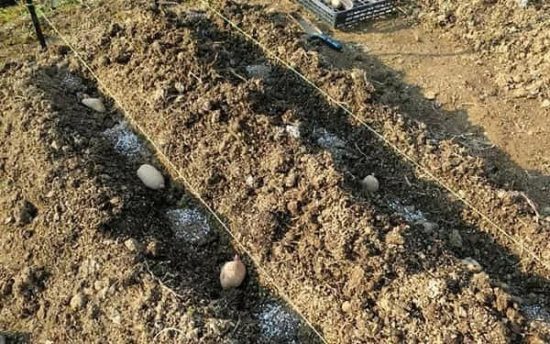
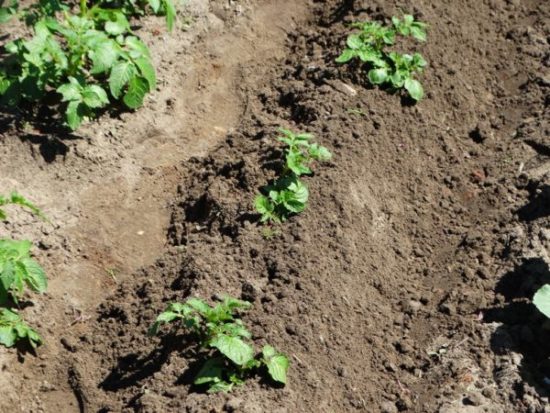
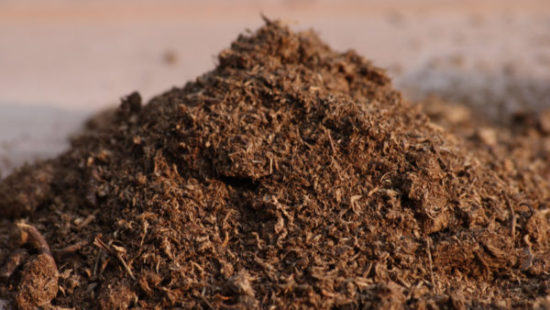
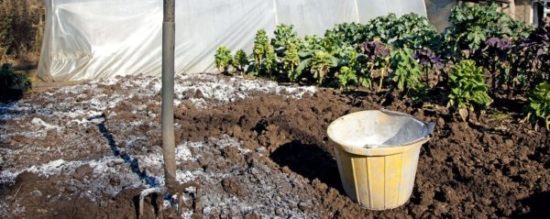
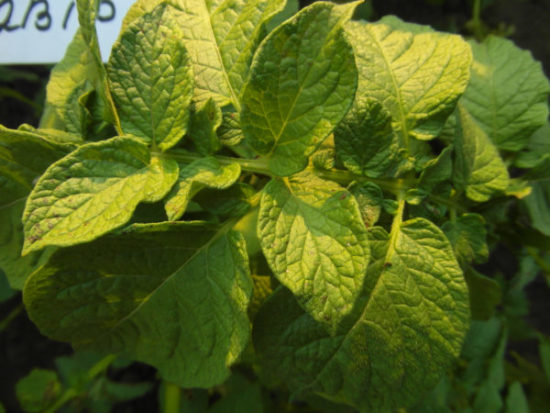
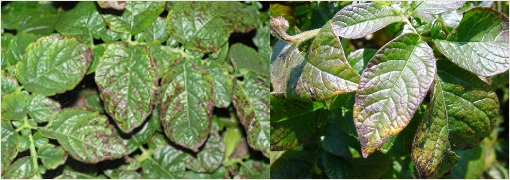
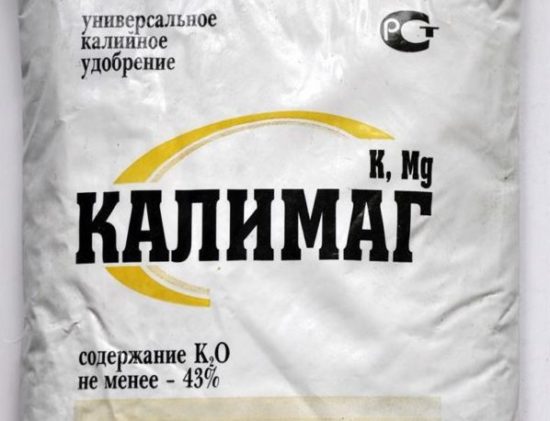
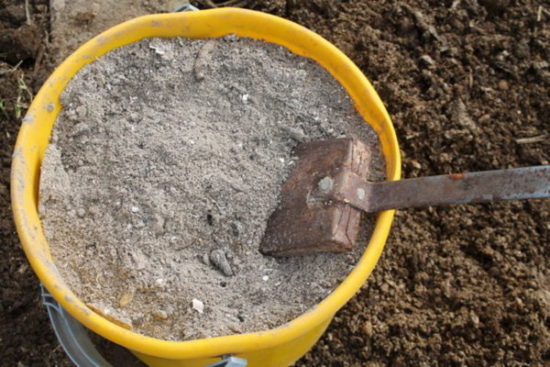
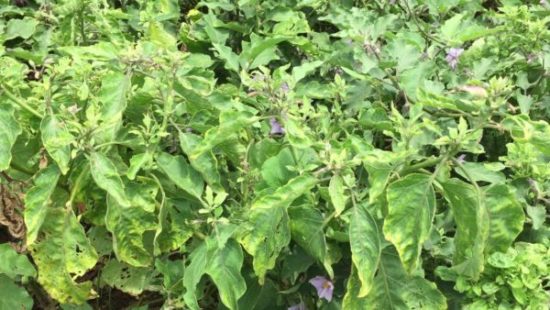
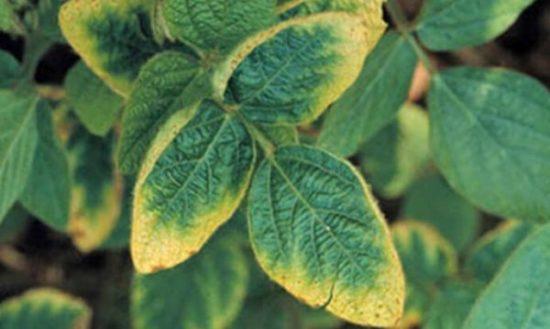
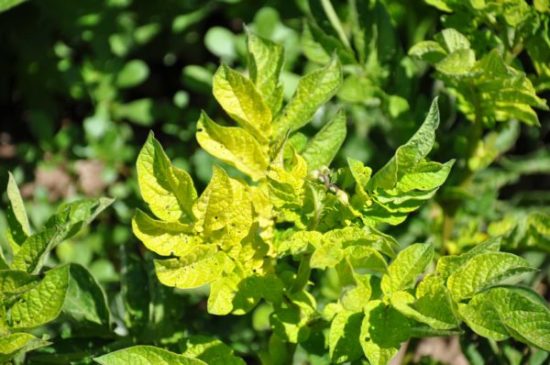
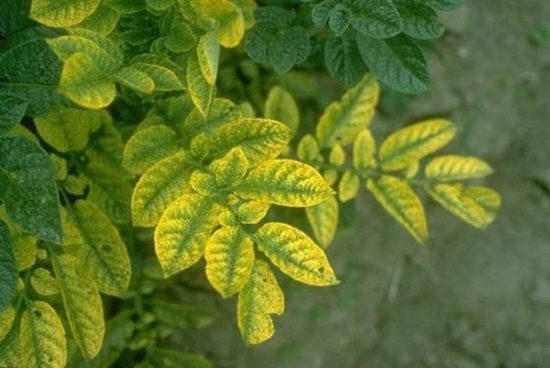
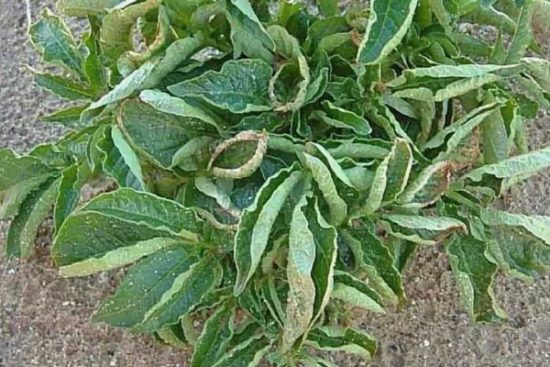
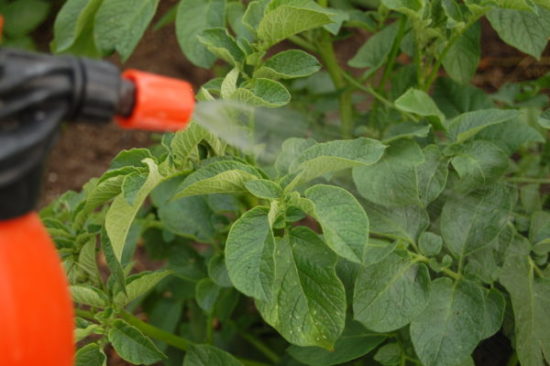

 CUCUMBERS NEVER GET SICK, I'VE BEEN USING ONLY THIS FOR 40 YEARS! I SHARE A SECRET WITH YOU, CUCUMBERS ARE LIKE THE PICTURE!
CUCUMBERS NEVER GET SICK, I'VE BEEN USING ONLY THIS FOR 40 YEARS! I SHARE A SECRET WITH YOU, CUCUMBERS ARE LIKE THE PICTURE! You can dig a bucket of potatoes from each bush. Do you think these are fairy tales? Watch the video
You can dig a bucket of potatoes from each bush. Do you think these are fairy tales? Watch the video
 How our fellow gardeners work in Korea.There is a lot to learn and just fun to watch.
How our fellow gardeners work in Korea.There is a lot to learn and just fun to watch. Eye trainer. The author claims that with daily viewing, vision is restored. They don't charge money for views.
Eye trainer. The author claims that with daily viewing, vision is restored. They don't charge money for views. A 3-ingredient cake recipe in 30 minutes is better than Napoleon. Simple and very tasty.
A 3-ingredient cake recipe in 30 minutes is better than Napoleon. Simple and very tasty. Therapeutic exercises for cervical osteochondrosis. A complete set of exercises.
Therapeutic exercises for cervical osteochondrosis. A complete set of exercises. Which indoor plants match your zodiac sign?
Which indoor plants match your zodiac sign? What about them? Excursion to German dachas.
What about them? Excursion to German dachas.
So, in the fall, the area under potatoes should be deeply plowed so that the parasites that have settled in for the winter get to the surface of the earth. Cold and frost will not allow them to wait until spring. And it’s better to start plowing in spring when the soil is already crumbly and without lumps. The arable layer for the crop should be at least 27-30 cm thick, since the root system of potatoes is formed, as a rule, at a depth of 20-25 cm. Tilling the soil in autumn and spring improves the water regime and air exchange in it, which has a positive effect on the development of plants .